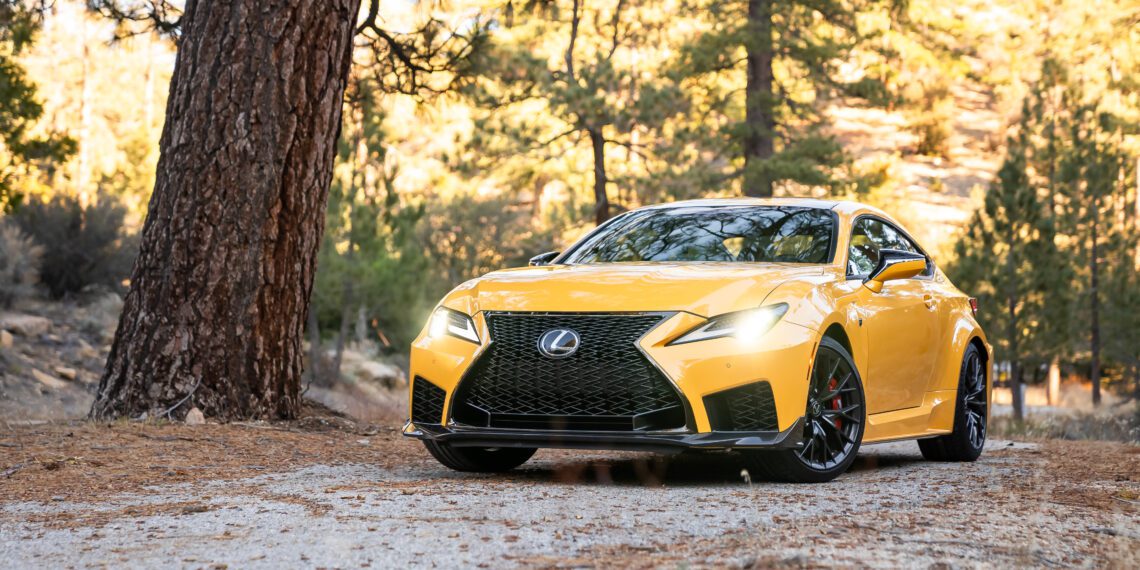When the Lexus RC F debuted in 2014, it did so with one major goal: to compete with the best premium sporty two-doors Europe could offer. Armed with a free-revving naturally-aspirated 5.0-liter V8, the RC F set its sights on the BMW M4 and Mercedes-AMG C63, two cars that had recently embraced a then-growing industry trend of downsized engines strapped with turbochargers. From the start, the RC F banked on an increasingly atypical engine configuration to drive its appeal.
Skip ahead ten years, and the Lexus RC F truly stands in a class of one, reminding us that not all progress is good. While the BMW M4 and its turbo-inline-six have leapfrogged its class to offer performance closer to that of yesterday’s supercars, the aforementioned C63 is now stuck with a hybridized turbo-four that’s been far from well received. Some progress is necessary, however. The latest Lexus RC F isn’t all that different from the car that debuted a decade ago. It may have updated styling, but it’s still powered by the same V8, the same eight-speed automatic transmission, and despite some tech updates, offers up a cabin that’s largely untouched.
Given how much its competitors, and really the car industry overall, have changed over the last decade, does the Lexus RC F make us yearn for what we’ve lost or remind us of the pitfalls of getting stuck in the past?
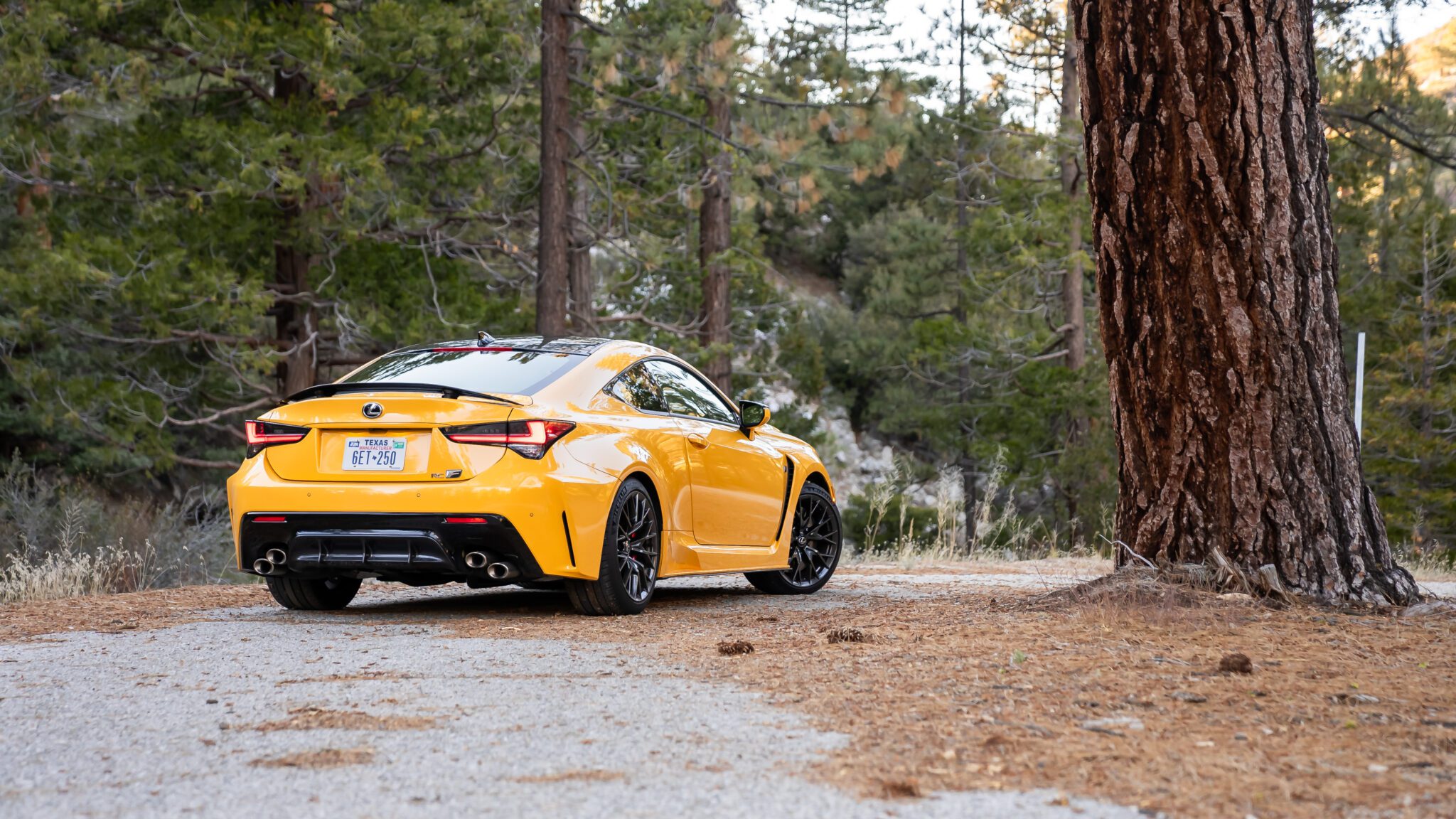
To start, we have to look back to 2019, when the RC F received its mid-cycle refresh and its last major update. A common early criticism of this car was its hefty 3,958-pound curb weight, but more importantly, how it made its handling feel sluggish. To combat this, Lexus went on a weight-saving crusade for the 2020 model year, shaving off precious grams of aluminum (700 g) from its intake manifold, replacing its solid half shafts with hollow ones, and even fitting a smaller compressor to its air conditioning system. The 2023 model we tested claims a curb weight of 3,946 lb, a tiny 12-lb reduction.

A more impactful improvement is the updated RC F’s use of stiffened bushings front and rear, implemented to reduce this two-door’s tendency to understeer; more on this later. Its steering rack bushings are stiffer by 150 percent, promising improved steering response and feel. A redesigned air box and a less restrictive intake system improve airflow and throttle response. The right pedal’s software also received significant tweaks to make power deployment more linear and predictable.
The most notable change from 2019’s refresh is the RC F’s updated styling, which draws inspiration from the RC F GT3 and GT500 race cars with its sharpened front and rear bumpers and more comprehensive aero package. These make way for larger air intakes up front, which direct more air into its oil coolers, while vents open its front fenders and allow air to flow out of its wheel wells. Alongside a new front splitter, extended side splitters improve high-speed stability while updated LED head and tail lights round out the list of changes.
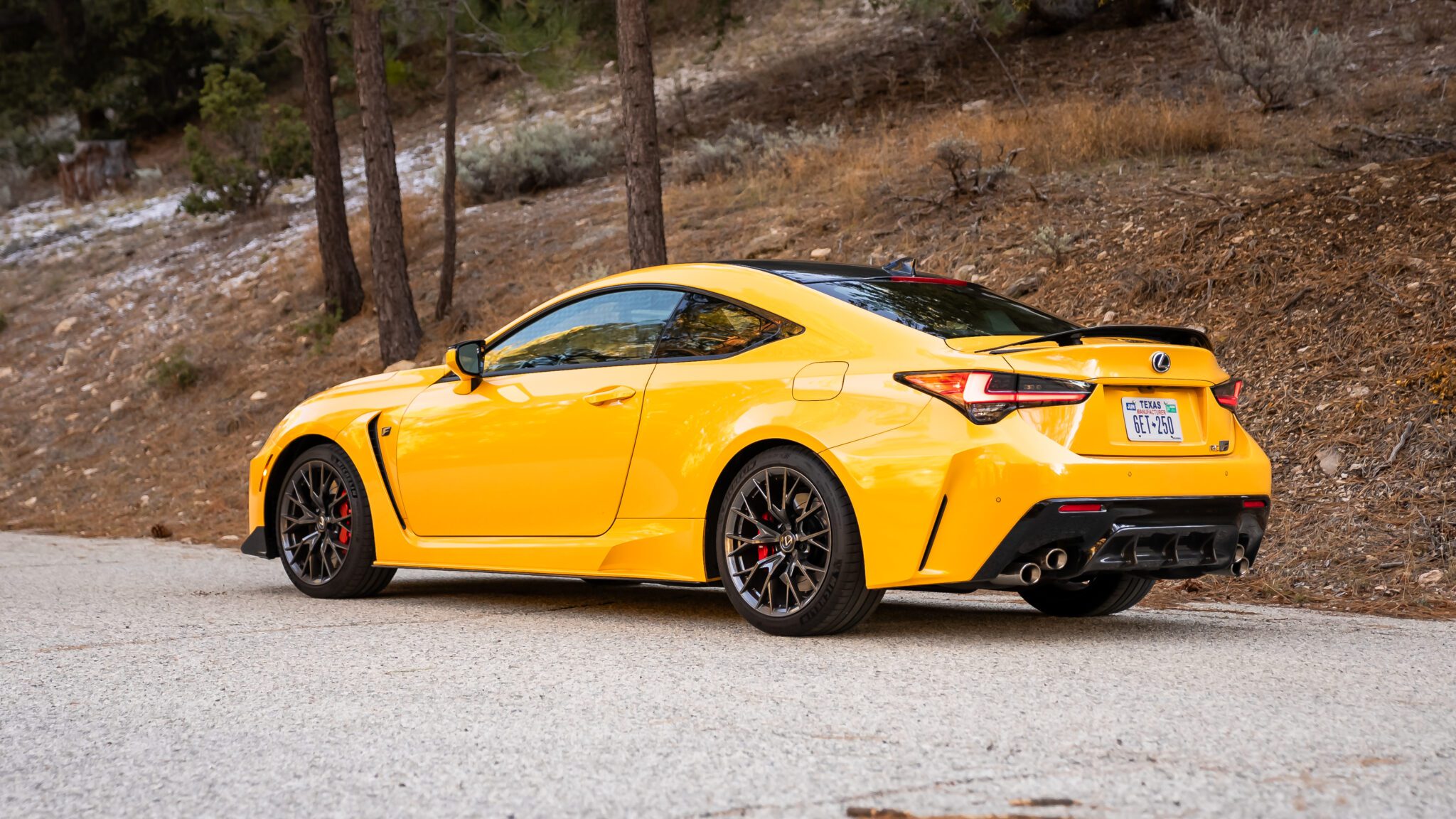
Our wonderfully colorful Flare Yellow tester wears the single most expensive option currently available for the Lexus RC F, the $17,775 Carbon Package. It adds a carbon roof, front splitter, rocker panel splitters, diffuser, active rear wing, and 19-inch BBS forged matte black wheels to the exterior. Inside, the pricey pack adorns the cabin with heated and cooled perforated leather seats, a heated steering wheel, and an intuitive parking assist. For the 2023 model year, the RC F gets a massively improved 10.3-inch infotainment screen, which, thanks to its touch capabilities, circumvents the need to use Lexus’ frustratingly cumbersome and imprecise touchpad controller.
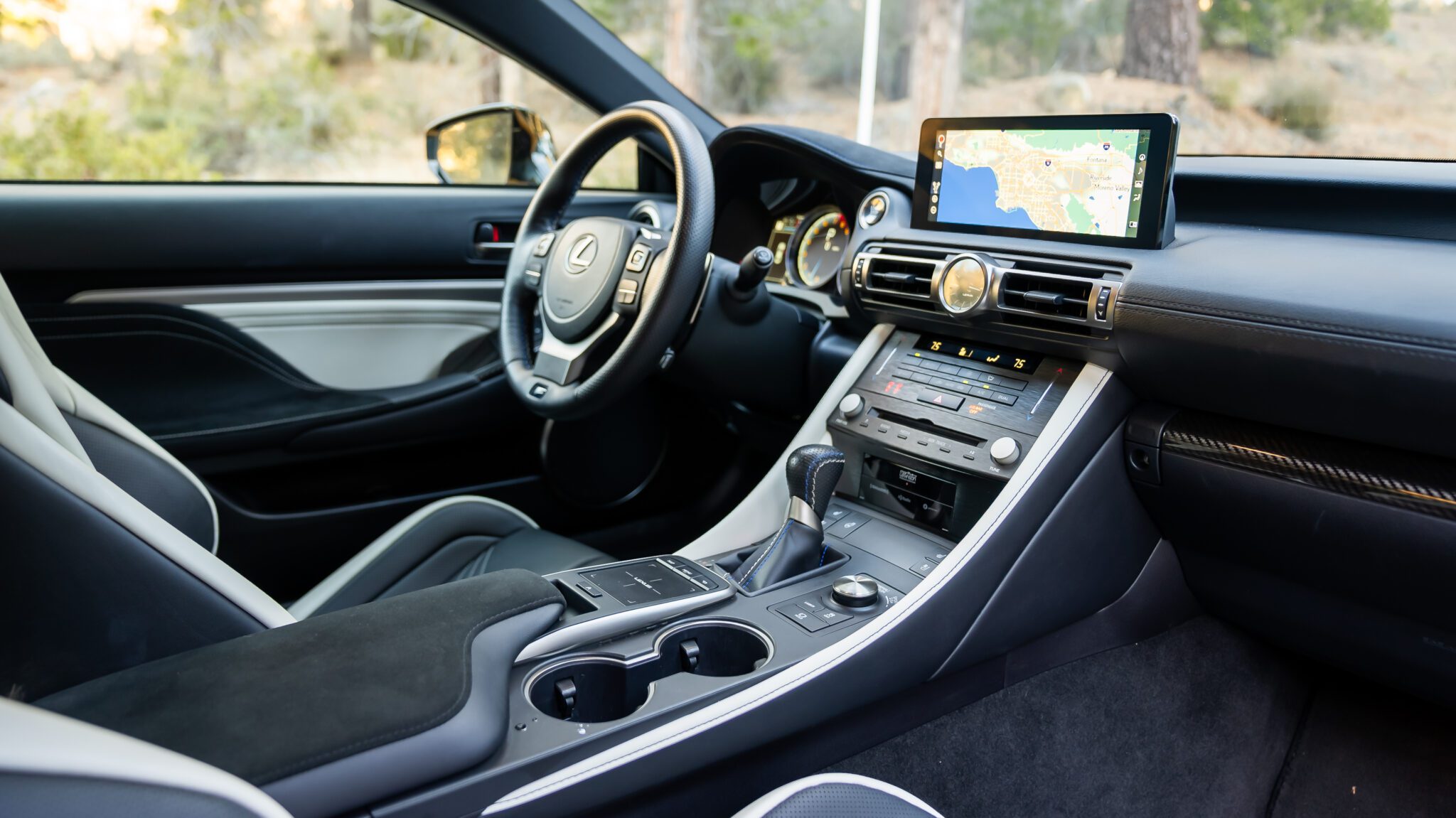
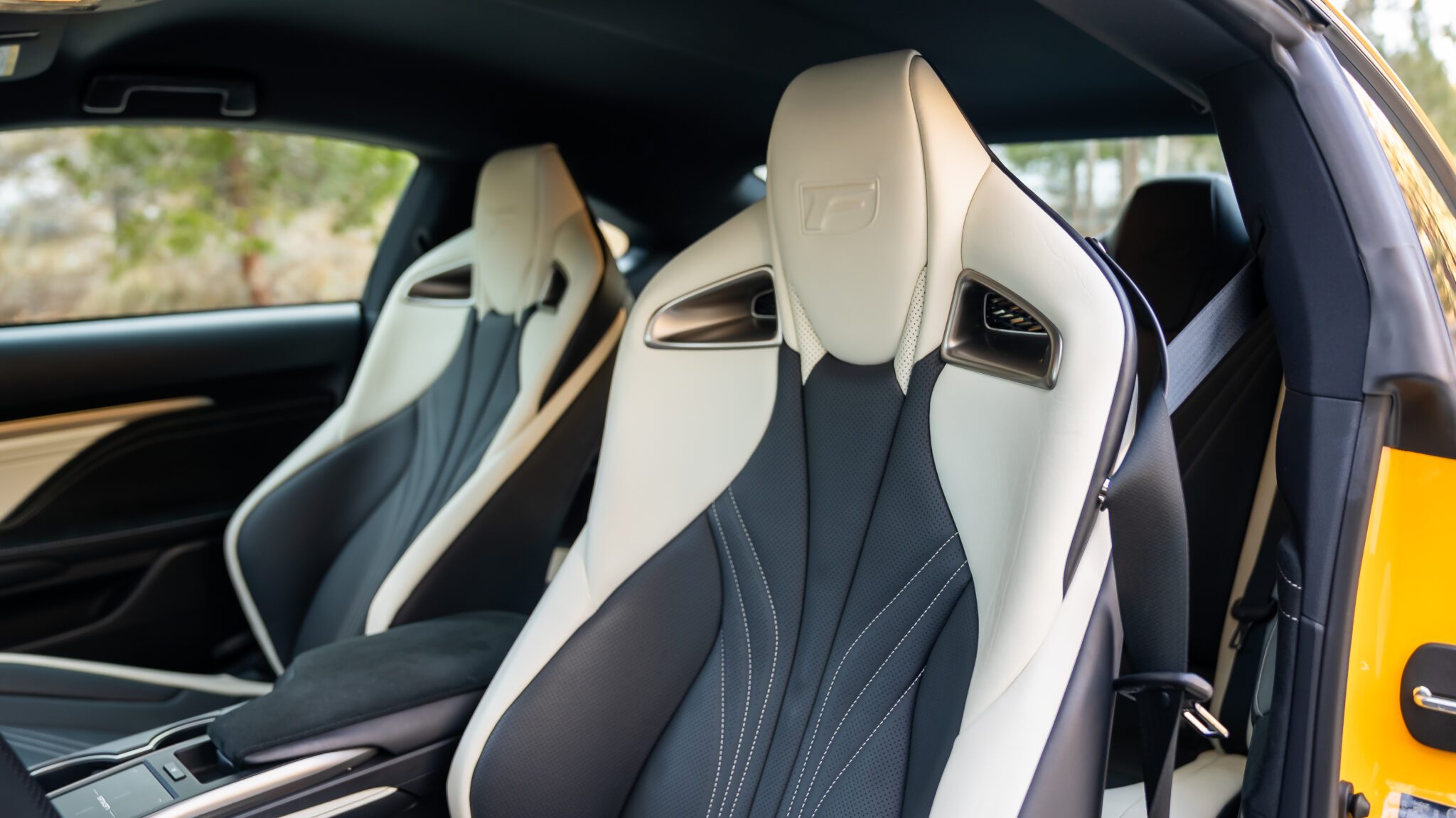
For 2019, the Lexus RC F’s 5.0-liter naturally aspirated V8 received a minuscule power bump of five hp and six pound-feet of torque up to the 472-hp and 395-lb-ft output figures that remain in the newest model. That power goes to the rear exclusively via Toyota’s slow but smooth in-house AA80E eight-speed automatic transmission. Flat out, it’ll sprint to 60 mph in 4.2 seconds and max out at 162 mph. These figures are made possible partly because of the RC F’s custom Michelin Pilot Sport 4S rubber, which measures 255/35/19 at the front and 275/35/19 in the rear.
Now that you’re fully caught up, are these updates impactful enough to ensure the Lexus RC F’s relevancy when its direct competitors have advanced a whole generation over the last decade? Sort of. In isolation, it’s a very charming and engaging sports car primarily due to its free-revving naturally-aspirated V8. With peak power coming in at 7,100 rpm, it requires plenty of throttle to reach its maximum potential, an exercise made all the more enjoyable by its wonderfully sonorous intake noise, which permeates the cabin, and roaring muscle car tones emanating from its stacked quad exhaust tips.
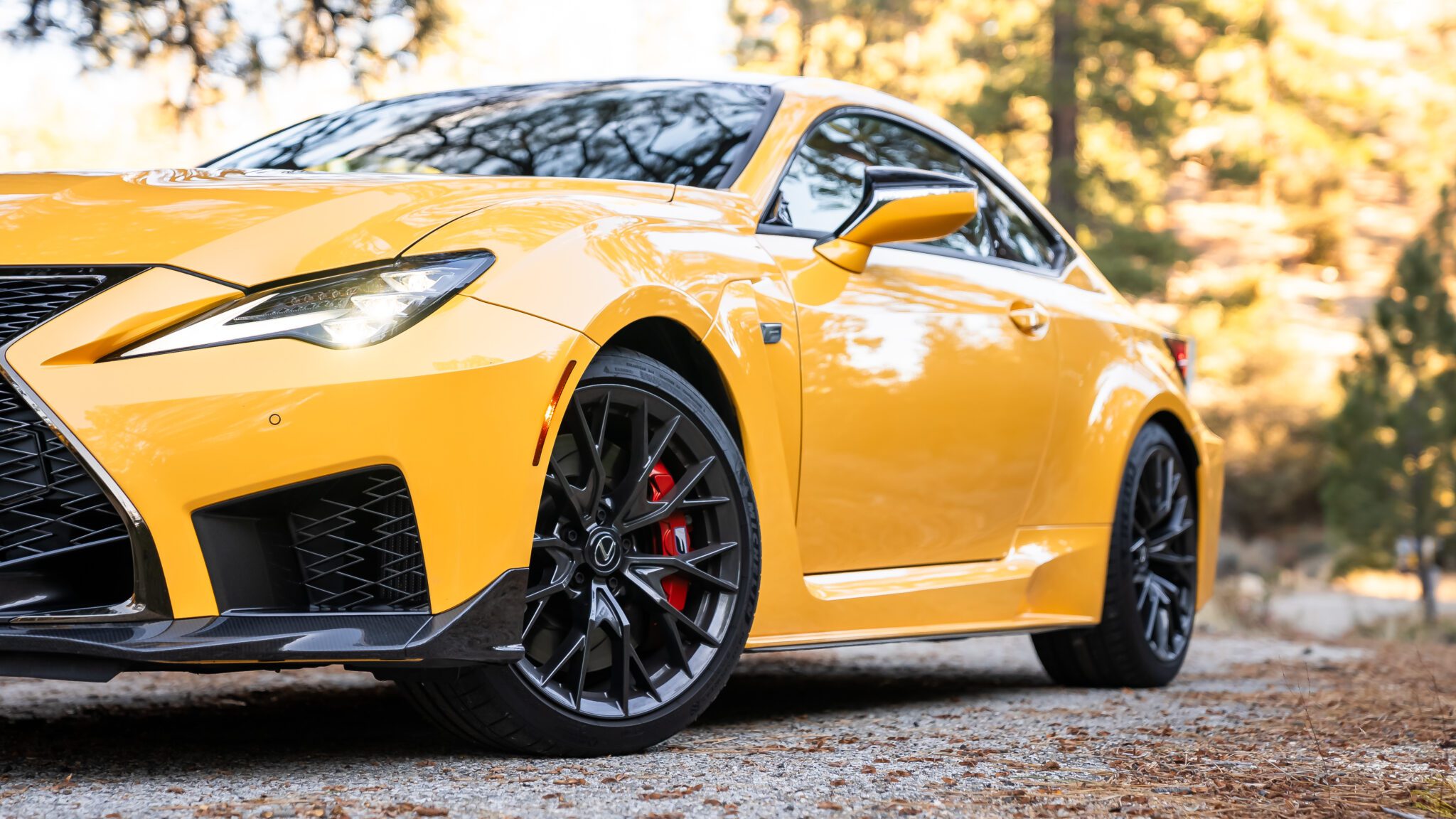
Despite its stiffened bushings, the Lexus RC F’s front end is still far from agile. Turn the wheel, and you’ll feel every bit of its 3,946-pound curb weight. The speed of its direction changes, aided by a modestly communicative steering system, remains slow and imprecise compared to its heavily updated contemporaries. It’s worth noting, however, that the current iteration of Lexus’ sports car is a significant improvement over the pre-facelift model, with a reduced tendency to understeer. Although Lexus updated its standard adaptive suspension, it never firms up enough to keep the RC F’s body motions in check on a twisty road, even in the stiffest Sport+ setting.
Despite featuring updated six-piston Brembo brake calipers up front and four-piston units in the back with 15-inch and 13-in rotors, our tester’s braking performance began to fade surprisingly quickly on our favorite canyon road despite offering excellent initial stopping power.
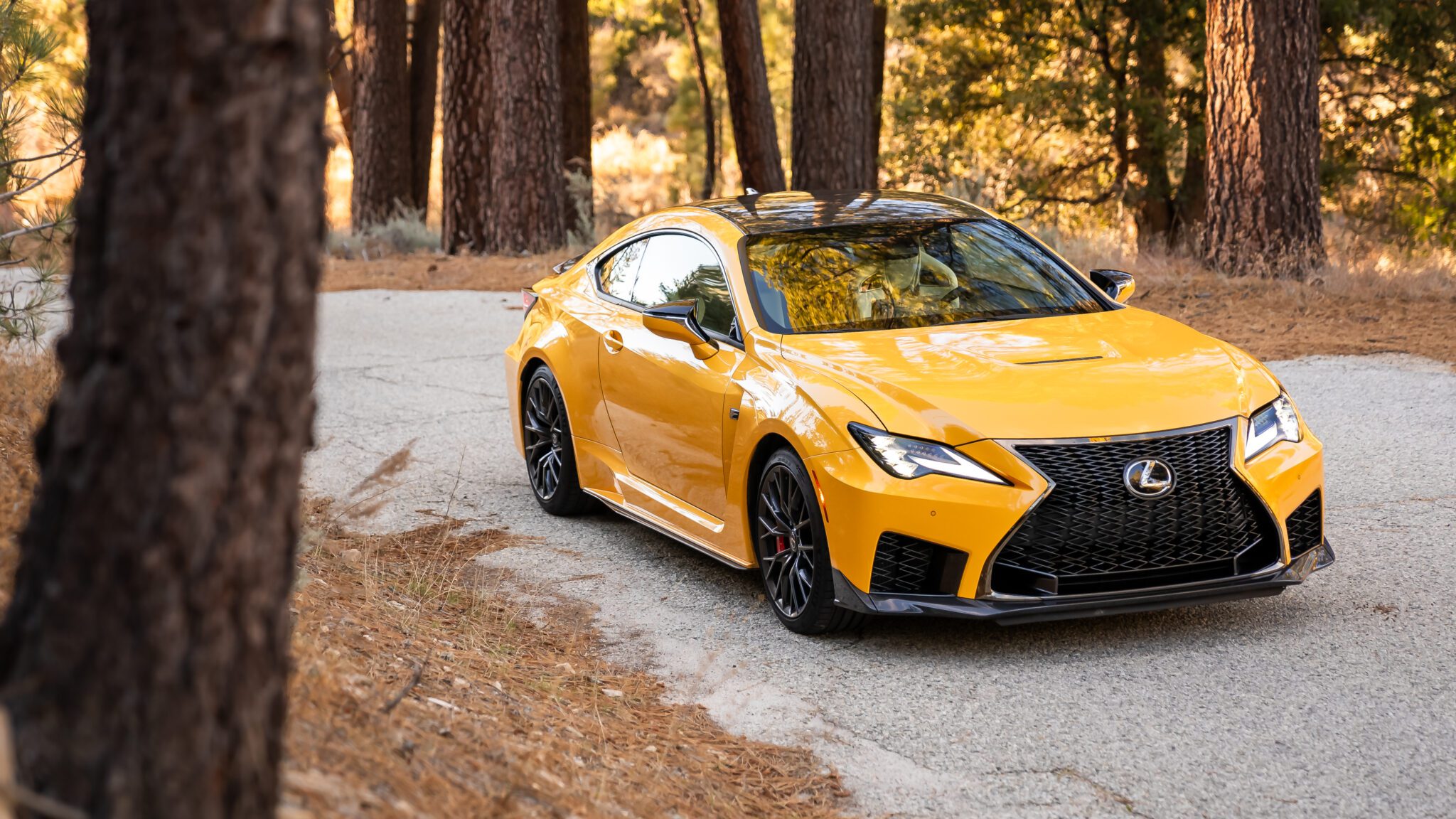
Compared to the updated BMW M4 Competition (the updated Mercedes-AMG C63 S isn’t yet available at the time of writing), the Lexus feels as old as it is. The RC F isn’t as agile in the bends due in part to its hefty weight and soft suspension, nor as quick in a straight line because its power requires noticeable build-up, or as engaging owing in part to a well-isolated cabin that unintentionally dulls the sensations and vibrations you’d want out of your sports car. Yet these very limitations add to its charm as it enters its tenth model year. The Lexus is more softly sprung than the BMW, and thanks to its limited-slip differential and slow steering rack, it is easy to slide and control once you exceed its traction limits.
Our 2023 model year Lexus RC F tester starts at $67,845, including a $1,150 delivery fee, while the succeeding 2024 model increases slightly to $68,295, factoring in the same fee. However, our tester, with options such as the aforementioned $17,175 Carbon package alongside the $2,725 Navigation/Mark Levinson Audio Package and $1,160 Premium Triple Beam LED headlights, carries an as-tested price of $91,210.
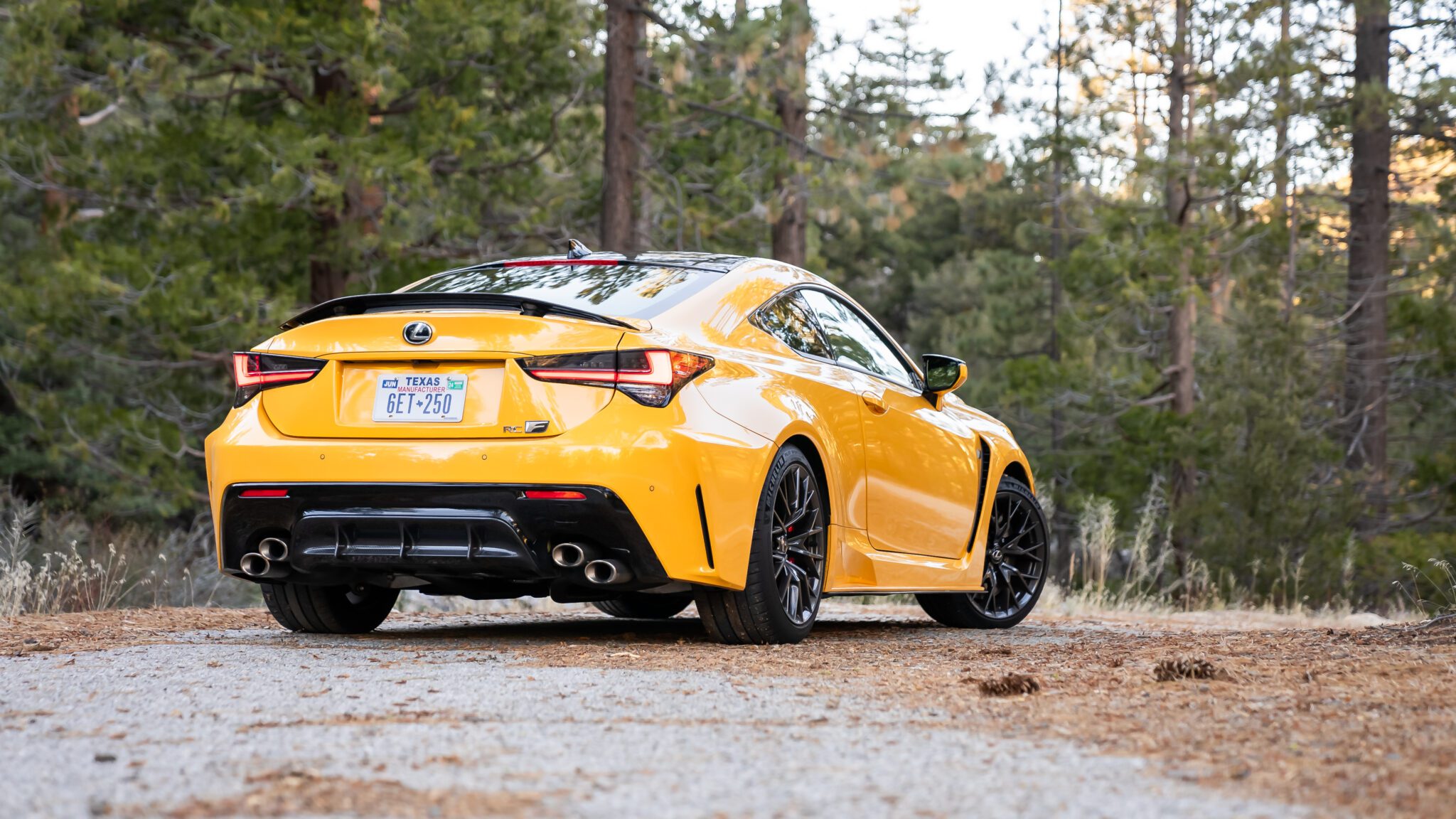
It’s unclear how much longer the Lexus RC F will be around, but what is clear is that despite its many incremental updates, it is not nearly as quick, precise, or engaging as some of Europe’s latest. However, the aging Lexus offers a naturally aspirated V8 that oozes personality and is far more engaging and responsive than anything with induction forced by turbos, and it sounds better, too. While its suspension isn’t as firmed up to tackle the bends, it remains comfortable for daily use.
Then there’s the styling, which, thanks to its race-car-inspired updates and our tester’s bright paint job, is aging phenomenally. Although a $91,210 price tag is considerable for a vehicle nearing the end of its lifecycle, for those looking for an old-school sports car, the Lexus RC F’s lack of overall relevancy won’t matter. They won’t look past its old-school nature; they’ll be drawn to it because they can’t get it anywhere else.

